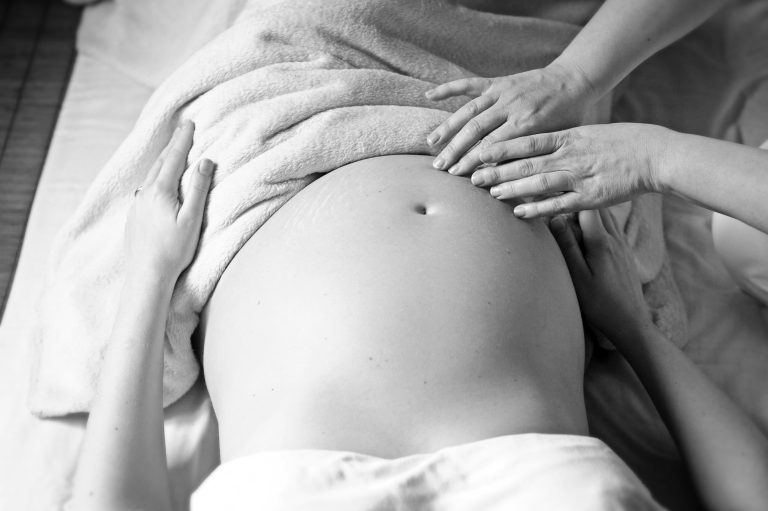Menstruation is a natural biological process that is part of every woman’s life. Despite this, many associate it with pain, discomfort, and shame, often due to misconceptions and negative narratives passed down through generations. This article aims to help you understand what happens in the body during menstruation, the challenges it may bring, and how you can naturally support your body during this time.
Why is it a challenge? What are the potential issues?
During menstruation, hormonal fluctuations affect not only the reproductive system but the entire body. The levels of estrogen and progesterone change cyclically, influencing metabolism, mood, and pain perception. Modern lifestyles—stress, poor diet, and lack of exercise—can exacerbate the discomfort associated with menstruation.
The most common issues include:
- Severe menstrual cramps (dysmenorrhea): Intense contractions of the uterine muscles can cause pain.
- Irregular cycles: Hormonal imbalances may lead to delayed, missed, or unusually short or long periods.
- PMS (premenstrual syndrome): Symptoms include mood swings, fatigue, bloating, headaches, and sleep disturbances.
- Side effects of hormonal contraceptives: Many start taking them as teenagers for skin issues or pain, but long-term use can disrupt natural hormone balance.
How does menstruation affect our bodies and lives?
Menstruation is not just a biological phenomenon; it affects the entire body. Hormonal changes influence blood circulation, the nervous system, and the immune system.
- Mood swings and anxiety: Low progesterone levels and fluctuating estrogen directly impact neurotransmitters in the brain, such as serotonin, which is responsible for feelings of happiness.
- Energy fluctuations: Different phases of the menstrual cycle can result in varying energy levels. For example, energy may peak around ovulation, while fatigue may set in before menstruation.
- Digestive changes: Hormones affect digestion, leading to bloating, diarrhea, or constipation at different stages of the cycle.
These solutions are just examples. Everyone has different needs, priorities, and issues. What works for one person may not work for another. Experiment to find what helps you, and don’t worry if it’s unique.
- Nutritious diet: To stabilize blood sugar levels, consume low-glycemic index foods (e.g., vegetables, whole grains) and healthy fats (e.g., avocados, nuts). Iron-rich foods like spinach and lentils help replenish blood loss.
- Uterus-friendly herbs: Certain herbs can help alleviate menstrual cramps and regulate the cycle. Raspberry leaf and horsetail support hormonal balance, while ginger and cinnamon have anti-inflammatory properties.
- Exercise and stretching: Regular physical activity, especially yoga and light walking, can reduce menstrual cramps and improve circulation. Poses like “child’s pose” or “butterfly stretch” can be particularly effective.
- Breathing exercises and stress management: Breathing techniques (e.g., abdominal breathing) can help reduce pain and stress. Meditation and mindfulness practices are also beneficial for regulating the menstrual cycle.
- Natural pain relief: Heat therapy, such as a warm water bottle placed on the abdomen, can relax uterine muscles and ease cramps. Magnesium-rich foods and supplements can also support muscle relaxation and pain relief.
Menstruation is not an obstacle but an opportunity:
Menstruation is not an unpleasant problem but a natural part of the body’s functioning. Proper nutrition, exercise, and self-care can help you harmonize with your cycle. If your periods are painful or irregular, it’s worth experimenting with natural solutions and consulting a holistic healthcare professional if needed. Research in this field is continually evolving, and more evidence is emerging about the effectiveness of natural methods.
Remember: Your body is not working against you, but for you!
References:
- Armour, M., Ee, C., Hao, J., Wilson, T., Yao, S., & Smith, C. A. (2019). Acupuncture and acupressure for premenstrual syndrome. Cochrane Database of Systematic Reviews, 2019 (8), CD005290. https://doi.org/10.1002/14651858.CD005290.pub2
- Boyle, N. B., Lawton, C., & Dye, L. (2017). The effects of magnesium supplementation on subjective anxiety and stress—A systematic review. Nutrients, 9 (5), 429. https://doi.org/10.3390/nu9050429
- Daley, A. J., Stokes-Lampard, H. J., & MacArthur, C. (2011). Exercise for treating dysmenorrhoea. Cochrane Database of Systematic Reviews, 2011 (12), CD004142. https://doi.org/10.1002/14651858.CD004142.pub2







